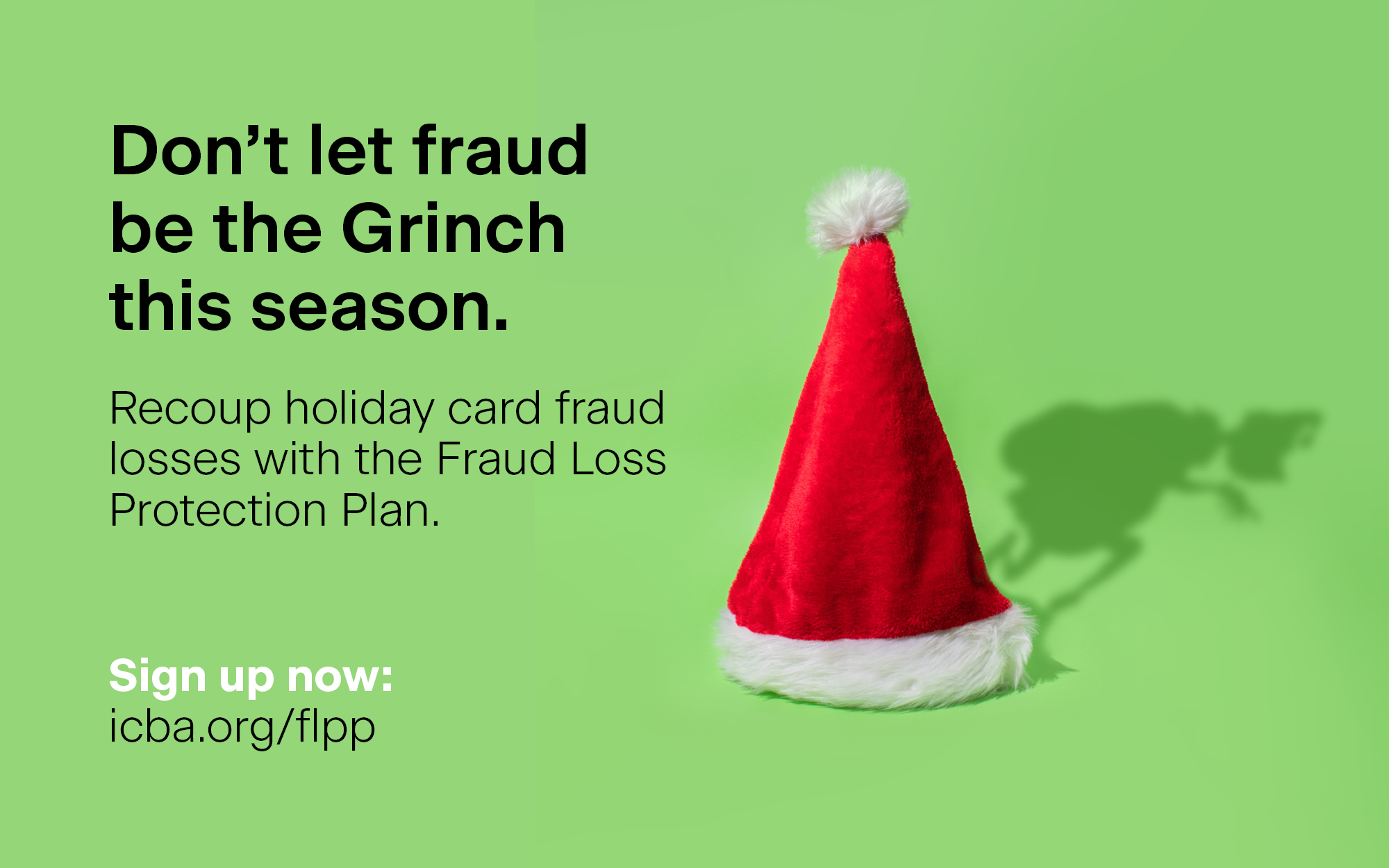Financial fraud and cyber attacks aren’t a one-age-fits-all scenario. By identifying the preferred banking and spending habits of different generations, scammers can tailor how they reach their targets. We look at community banks’ options for fighting this type of crime.
How fraudsters target different generations
October 01, 2022 / By Katie Kuehner-Hebert
Financial fraud and cyber attacks aren’t a one-age-fits-all scenario. By identifying the preferred banking and spending habits of different generations, scammers can tailor how they reach their targets. We look at community banks’ options for fighting this type of crime.
Fraudsters will find ways to attack as many people as possible in as many different ways, but often their methods are different depending on a person’s age.
Community banks can find ways to mitigate age-related fraud through technology, as well as by educating their customers of their particular risks.
Each generation interacts, understands and uses technology differently, and fraudsters are triggering customers based on this understanding, says Glenn Fratangelo, director of product marketing and strategy at NICE Actimize based in Hoboken, N.J.
“Gen Z, the younger generation, has transitioned into the workforce and is primarily being targeted through social media messages and chatbots,” Fratangelo says. “Fraudsters typically target millennials via text messages that promise rewards, shipment tracking and other automated messages that make them vulnerable to phishing attacks.”
“While some groups of people might be more vulnerable to certain types of financial fraud … many of these schemes don’t have specific age groups in mind. The only thing the criminal wants is for the scheme to succeed.”
—Rehman Khan, Travelers
Targeting boomers
Fraudsters tend to target baby boomers via robocalls about healthcare, taxes or Social Security, but they aren’t immune to social scams. Brandon Koeser, financial services senior analyst with RSM US LLP headquartered in Chicago, gives an example of how scammers can target people based on their ages.
“For example, someone who is Gen Z in age and posts to Facebook about a recent breakup may be less likely to wind up the victim of a romance scam than a baby boomer who loses a partner of 40 or more years who is consoled by loved ones on the same platform,” Koeser says.
A person’s tech habits might be a better indicator of becoming a financial fraud victim than their age, says Rehman Khan, assistant vice president of cyber risk management in Travelers’ Naperville, Ill., office. Someone with a large online profile and presence—emails, apps and account passwords—could be more susceptible to a ransomware attack.
“While some groups of people might be more vulnerable to certain types of financial fraud, such as elderly citizens victimized by a friend or family member requesting a large money transfer, many of these schemes don’t have specific age groups in mind,” Khan says. “The only thing the criminal wants is for the scheme to succeed.”
Koeser notes that, armed with age and other personal information, bad actors will find ways to elicit an action or reaction that may not otherwise come from a vigilant individual. “It’s through this that people fall victim to adoption scams, romance scams, charity scams, impostor scams or even online shopping scams,” he says.
Reports about fraud losses: Millennials vs. people 40+

Each generation, from millennials to Gen X to baby boomers, is vulnerable to cyber crime according to their online activities, with fraud resulting in hundreds of millions of dollars in losses every year. Source: Federal Trade Commission, 2019
How to minimize age-related fraud
Banks can take steps to help educate and protect their customers against the dangers of financial fraud, while making them aware of the serious consequences, Khan says.
“For some potential at-risk customers, banks could remind individuals to be mindful of certain schemes and provide advice on how to mitigate against those risks, like not clicking on an email link that looks suspicious or is sent from an unknown address,” he says. “Banks can also be extra vigilant in monitoring account activity, looking for any transactions or requests that raise questions, suspicions or an alarm.”
Attacks targeting Gen Zers and millennials tend to be a bit more complex and play on the idea of instant gratification, Khan says. For example, a typical attack uses fake ads with products and services that aren’t legitimate, such as “Who viewed my profile?” This can lure the user into unknowingly granting account access to an attacker, who might then demand funds.
Ways to combat this include using strong passwords, multifactor authentication, verifying links and sites before exchanging any account details, and always verifying the identity of the person or entity that is part of the financial transaction, he says.
Banks should be on the lookout for nonfamily members being added to banking or investment accounts and should ask about any sudden changes in spending patterns. “This includes following up with customers by phone using the number on file to discuss any financial decisions that seem out of character,” Khan says, “and creating internal procedures to elevate circumstances which may present the need for further inquiry and analysis to the appropriate decision-makers.”
“If you have a larger number of baby boomer customers, elder scams such as romance, lottery and sweepstakes scams or spoofing scams may be more likely than online or student loan scams. Helping your customers know how they may be targeted is key to preventing a customer becoming a victim.”
—Brandon Koeser, RSM US LLP
Putting technology to work
Banks are increasingly turning to forms of machine learning that have the power to analyze customer transaction data and patterns to sift out those activities that are anomalous, Koeser says. As an example, if a bank has more of a certain age demographic, the bank can use this as its baseline of what types of scams their customers may be most susceptible to.
“If you have a larger number of baby boomer customers, elder scams such as romance, lottery and sweepstakes scams or spoofing scams may be more likely than online or student loan scams,” he says. “Helping your customers know how they may be targeted is key to preventing a customer becoming a victim.”
But education isn’t just about how bad actors are continually learning and refining their harmful activities, Koeser says. The education needs to include the importance of protecting both the customer’s bank information while also avoiding sharing too much personal information online that could lead to financial compromise.
“While devoting more space on your bank’s website or in your social media posts related to financial fraud prevention is good, more will always be needed,” he says. “Continually balancing investment in technology with education is critical.”
A cohesive strategy
“There isn’t a silver bullet to the issues around generational differences when it comes to fraud, because fraudsters are continually adapting their methods to exploit a financial institution’s potential weaknesses and a customer’s vulnerabilities,” Fratangelo says. “Today, institutions are investing in fraud-fighting technology that is able to provide a holistic view of customer risk.”
Both banks and their customers must share in the responsibility of fraud prevention, which is why customer education and knowledge are “vital pieces of the fraud prevention puzzle,” he says.
“I also believe that banks should be transparent and communicative about why customers are experiencing a certain degree of friction with access or transactions, and continuously introduce new techniques to educate and increase customer awareness,” Fratangelo says. “This enables the bank to grow more meaningful relationships with their clients, and become trusted partners during stressful, uncertain circumstances when fraud does happen.”
Typical age-related fraud tactics
Baby boomers
- Robo calls
- Romance scams
- Email phishing
- Sweepstakes scams
Gen X
- Email phishing
- Text messages
Millennials
- Text messages
- Fake ads
Gen Z
- Social media
- Chatbots
Subscribe now
Sign up for the Independent Banker newsletter to receive twice-monthly emails about new issues and must-read content you might have missed.
Sponsored Content
Featured Webinars
Join ICBA Community
Interested in discussing this and other topics? Network with and learn from your peers with the app designed for community bankers.
Subscribe Today
Sign up for Independent Banker eNews to receive twice-monthly emails that alert you when a new issue drops and highlight must-read content you might have missed.
News Watch Today

Join the Conversation with ICBA Community
ICBA Community is an online platform led by community bankers to foster connections, collaborations, and discussions on industry news, best practices, and regulations, while promoting networking, mentorship, and member feedback to guide future initiatives.













